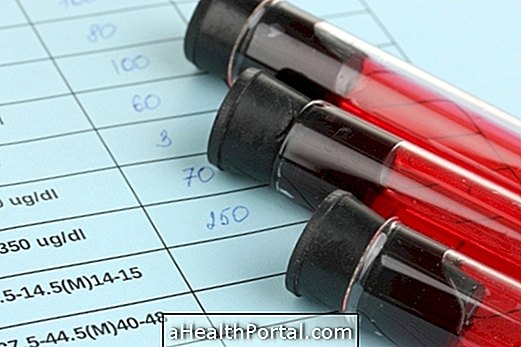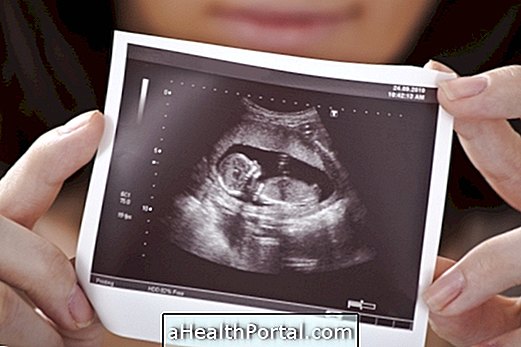Fetal erythroblastosis, also known as hemolytic disease of the newborn, is an abnormality that occurs when the baby has Rh-blood and has had a previous pregnancy in which the baby was born with Rh + blood.
In these cases, the mother's body during the first pregnancy produces antibodies that, during the second gestation, begin to fight the baby's red blood cells, eliminating them as if they were an infection. When this happens, the baby can be born with severe anemia, swelling and enlargement of the liver, for example.
To prevent these complications in the baby, the woman should make all prenatal consultations and exams, since it is possible to identify the risk of fetal erythroblastosis by initiating treatment, which includes an injection with immunoglobulins.

What may cause fetal erythroblastosis
The most frequent cases occur when the mother, who has Rh-blood, has had an earlier pregnancy in which the baby was born with Rh + blood. This can only happen when the father's blood is Rh + also and so if the mother is Rh- the obstetrician can request a blood test from the father, in order to evaluate the risk of erythroblastosis happening.
In addition, and although it is rarer, this change can also develop when the pregnant woman received a blood transfusion of the type Rh +, at any time of its life, before having become pregnant. Therefore, it is important that the obstetrician knows the entire history of the pregnant woman well.
How is the treatment done?
The treatment to prevent fetal erythroblastosis consists of the injection of anti-D immunoglobulin:
- At the 28th week of pregnancy : especially when the father is Rh + or when the first child was born with Rh + blood and did not receive the injection during the first gestation;
- 3 days after delivery : in cases in which the woman did not inject during pregnancy and the baby is born Rh +, in order to avoid the formation of antibodies that can affect a future pregnancy.
If no injection is made and the baby is suffering from fetal erythroblastosis, the doctor may still attempt an intrauterine transfusion to try to correct the anemia before birth. In addition, the obstetrician can still anticipate the date of delivery as soon as the baby's lungs and heart are well developed.
Possible symptoms
The symptoms of fetal erythroblastosis, such as anemia, yellow skin and generalized swelling, only arise after pregnancy, when immunoglobulin or transfusion treatment can no longer be done on the baby.
Therefore, to know the risk of the pregnant, the obstetrician usually asks for a blood test in the beginning of the pregnancy to evaluate the type of Rh and to identify if it has antibodies of a previous pregnancy. If the woman is Rh-, the doctor will ask that the baby's father also take the blood test. If the father is also Rh-, no treatment is necessary, but if it is Rh +, the pregnant woman should take the immunoglobulin injection at the 28th week of gestation.






















